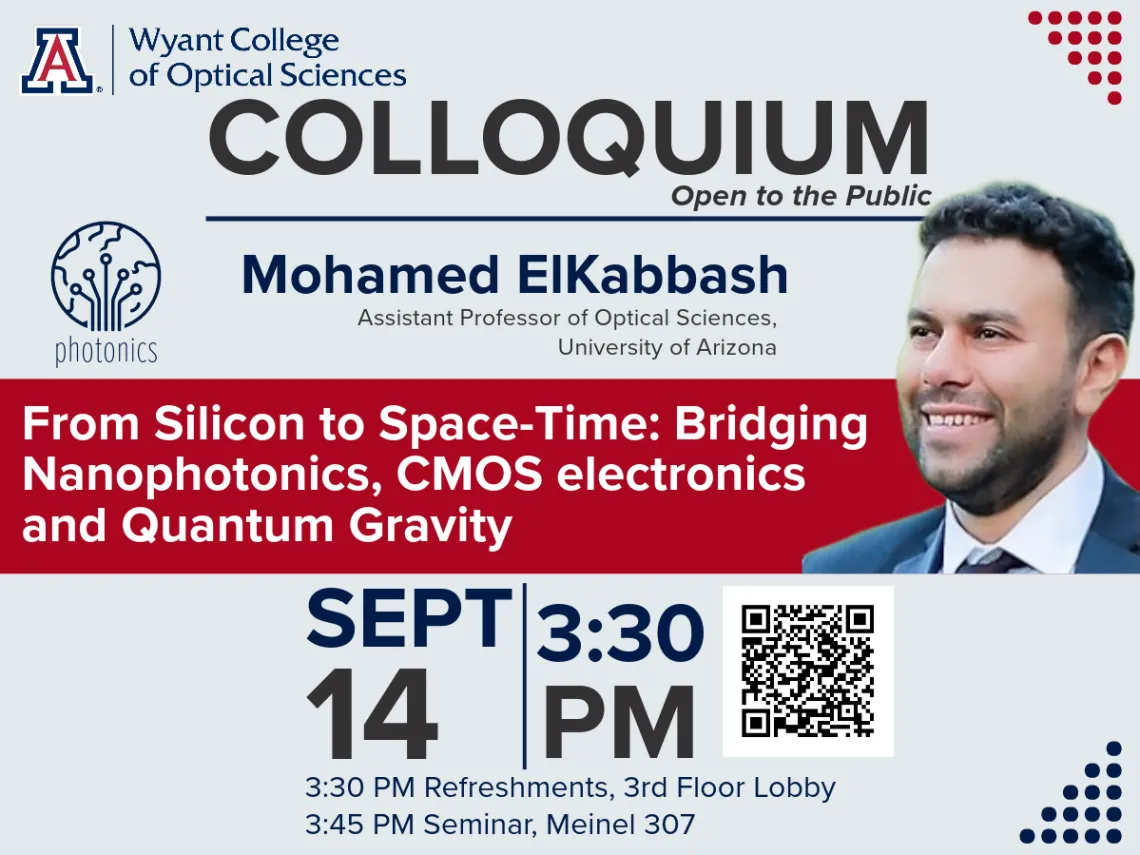
When
Where
Title
From Silicon to Space-Time: Bridging Nanophotonics, CMOS electronics and Quantum Gravity
Abstract
Nanophotonics is an interdisciplinary field that melds science and engineering to investigate the behavior of light and its interactions with matter on the nanometer scale. This field encompasses a diverse range of subtopics, including photonic crystals, integrated photonic circuits, plasmonics, metamaterials, and metasurfaces. The aim of this talk is to provide a concise overview of the expansive scope of nanophotonics and highlight the breadth of its scope by focusing on two very different, yet surprisingly connected, topics. The first part of the talk will highlight our research efforts in the co‐integration of nanophotonic and electronic devices using standard bulk silicon CMOS foundry processes. Specifically, we will present our development of high‐speed liquid crystal plasmonic modulators and demonstrate the promising potential of this approach for creating high‐speed spatial light modulators. The second part will outline the steps our lab is taking to realize a quantum analog of the Cavendish experiment, wherein both nanophotonics play pivotal roles.
Bio
Mohamed ElKabbash is an Assistant Professor in the College of Optical Sciences, University of Arizona. He did his PhD in Condensed Matter Physics at Case Western Reserve University (2013‐2017) where he was a Case Comprehensive Cancer Center fellow, then spent two years as a postdoctoral researcher in the Institute of Optics, University of Rochester (2018‐2020). Mohamed then joined the Quantum Photonics Group at MIT (2020‐2023). Mohamed's research interests span a range of topics including Nanophotonics, Quantum optics, Optoelectronics, and table‐top experimental tests of fundamental physics.
Visit our website for future lecture dates and speaker information
For a list of our archived lectures
The recording of this colloquium is not publicly accessible.
